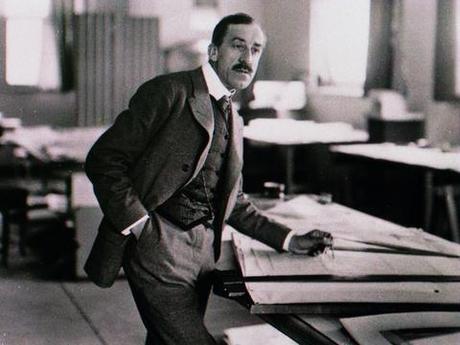
In the late 19th century Flemish architect Henry van de Velde was the frontrunner for Art Nouveau architecture. He was one of the first modern architects to exclusively favor the "form follows function" theory in architecture. Images are courtesy of www.vandevelde2013.de
Van de Velde and two other Flemish architects, Victor Horta and Paul Hankar were the founders of Art Nouveau, or, Jugendstil architecture as it is called in Germany. He was one of the first modern architects to develop the theory “form follows function”.
After starting his career as a painter in Belgium, Van de Velde turned to architecture and design after becoming enamored with the works of William Morris and John Ruskin of the Arts and Crafts Movement (1860-1910).
One of his most important commissions came in 1895 when he designed the interiors and furniture for the famed Maison de l’Art Nouveau in Paris. Refusing to bend to the process of historical patterns, which he thought were banal and hideous, he put his Art Nouveau mark on everything; buildings, furnishings, china, wallpapers, and even draperies.
In 1902 the Grand Duke of Weimar contracted Van de Velde to design two buildings for his School of Art and Applied Arts, now Bauhaus University. It was from these that the Bauhaus style of architecture emerged. They are now listed as UNESCO World Heritage Sites.
During the time that Van de Velde was director of the school, 1902 to 1917, he designed several houses in Thuringer and Saxony. In each he adhered to the principal of exposing the interiors to natural light with large windows that brought nature inside.
A beautiful example of this is his house in Weimar, Hohe Papplin Haus, with its stunning sky jutting angles. Another is the airy interior he designed for the Nietzsche Archives that houses the papers of noted German philosopher Frederick Nietzsche.
With the outbreak of World War I Van de Velde was forced to return to his native Belgium. It was he who recommended to the Grand Duke that Walter Gropius be appointed his successor as superintendent of the School of Art and Applied Arts.
In celebration of Henry van de Velde’s 150th birthday events and exhibits will be take place in Thuringer and Saxony throughout the year. For information click here.
